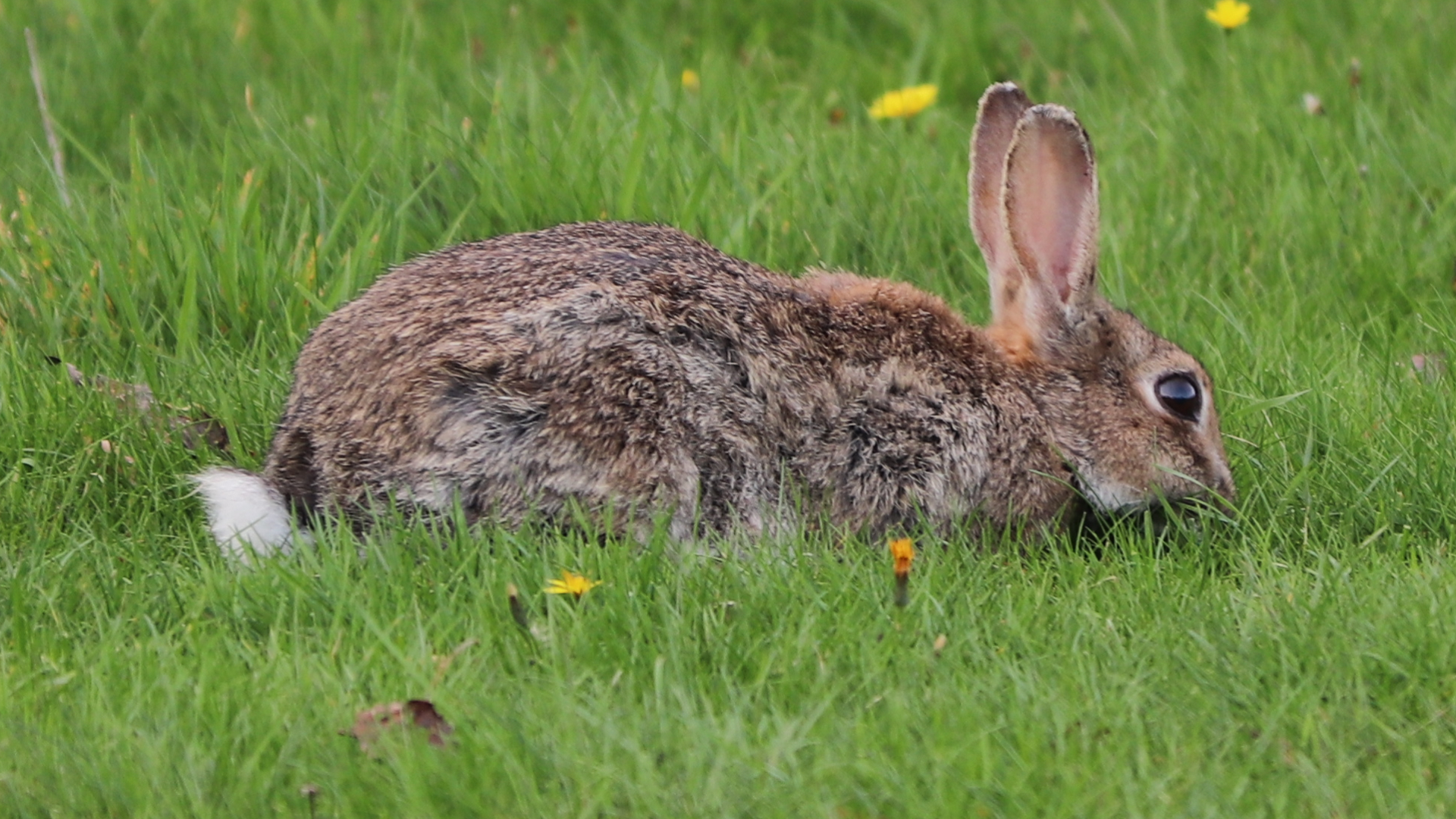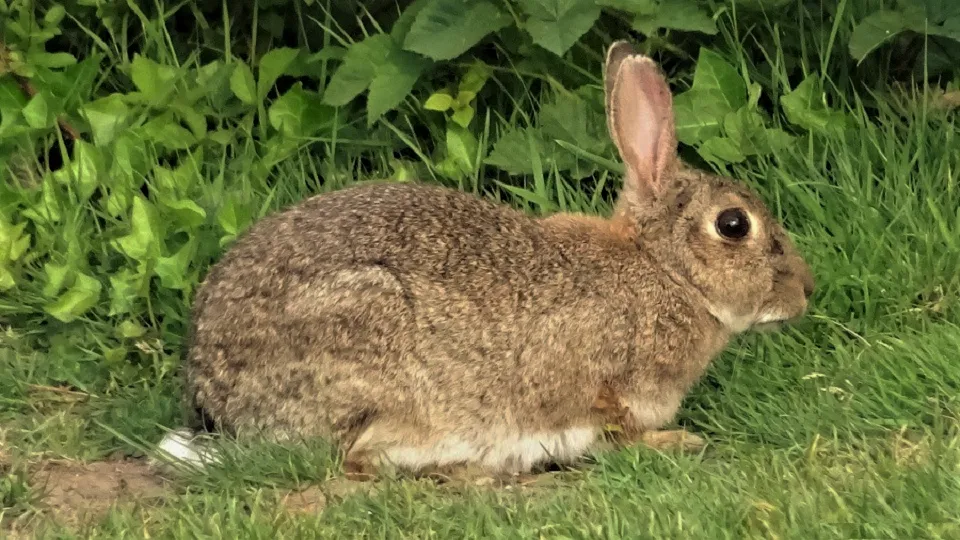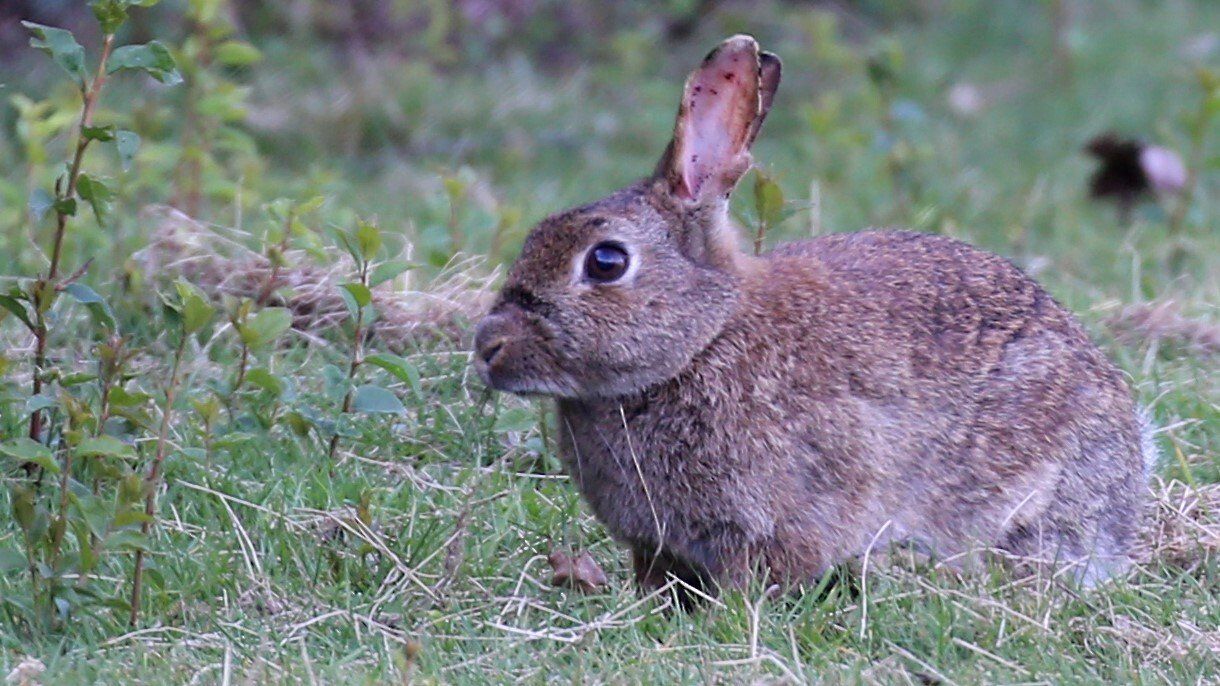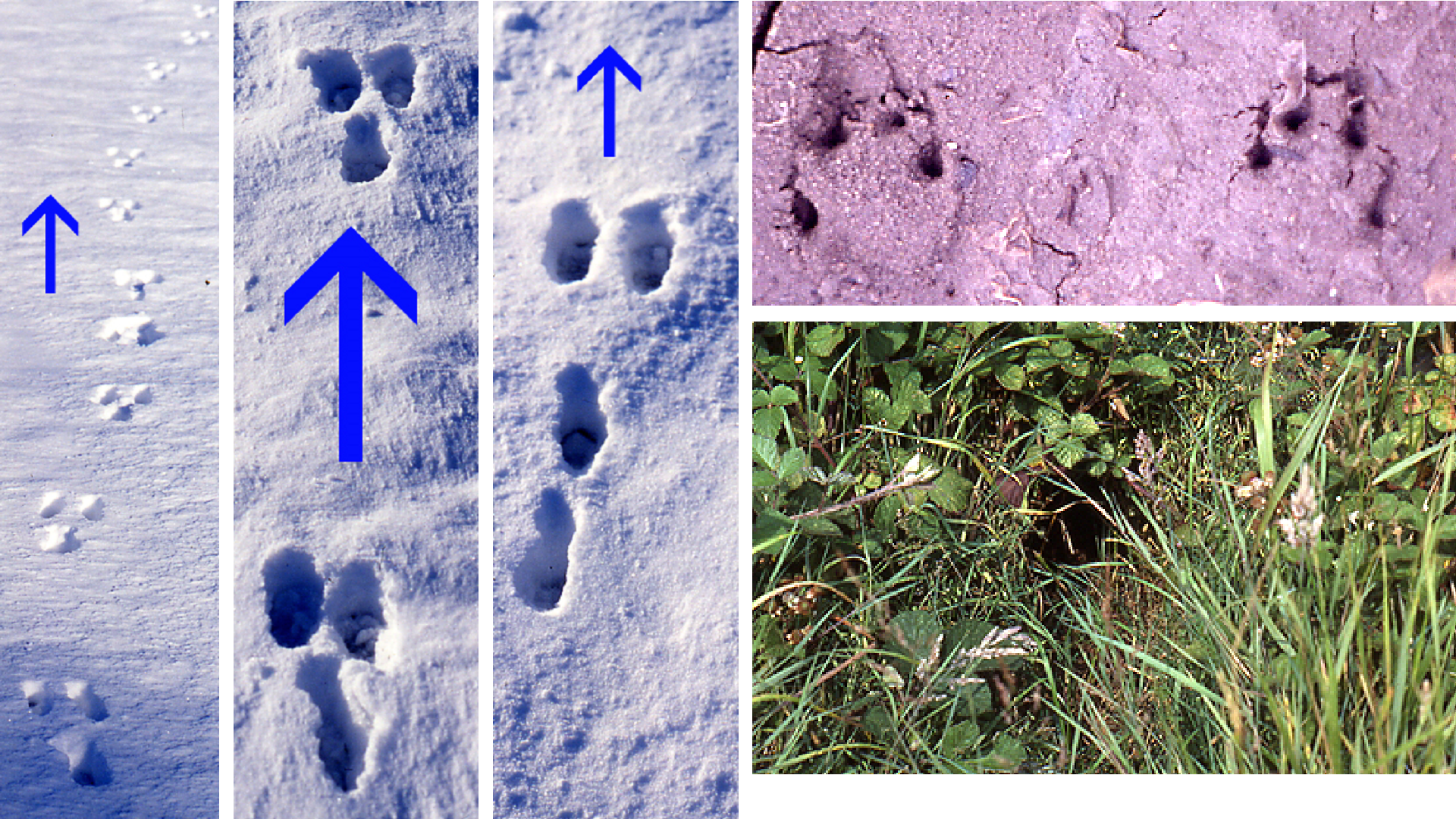

Rabbit
Oryctolagus cuniculus
Rabbits were introduced to Britain in the 12th Century from the Iberian Peninsula by the Normans, becoming widespread from the mid-1700s. They feed on grass, grazing mainly at night close to the warren. A warren is an underground network of interconnecting burrows. Entrances are usually 10-50cm wide and are often found on sloping land. There is usually a short run in front of the hole. This enables the rabbits to see forward and makes it harder for predators to attack from the sides. April to June is the main breeding season. A male is called a Buck, a female is known as a Doe, and the young are Kittens.

© Michael Trump TQ4792 06/10/2017

© Raymond Small TQ4893 09/05/2022

© Raymond Small TQ4792 16/05/2018

© Colin Carron TQ4793 26/05/2017

© Michael Trump TQ4792 06/10/2017

© Brian Ecott Tracks and prints.
1st & 2nd left: A rabbit hops in the snow in the direction of the arrow. To hop it places its two forepaws together and then leaps forward with the two hind feet. This gives the appearance of three holes in the ground. 3rd left: The rabbit is running. The two hind feet are moving separately but the fore feet are still together. Above right: Rabbit forepaw tracks in mud showing four toes and claw marks. The hind foot has five toes (not illustrated). Bottom right: Escape tunnel under brambles.